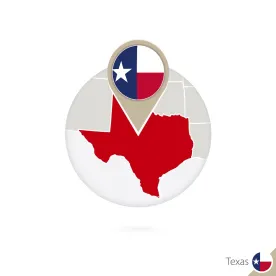On August 24, 2023, health care providers in Texas scored yet another victory when a federal court vacated additional portions of the Biden Administration’s rulemaking under the federal No Surprises Act (the Act). This marked the second time in August alone that a federal court in Texas struck down rulemaking issued by the US Departments of Treasury, Labor, and Health and Human Services (the Departments) under the Act.
*This is the 10th article in a series analyzing the No Surprises Act and its implementation. To view the entire series, click here.
As background, the Act aims to prevent surprise medical bills — bills patients receive when they are forced to obtain emergency care at an out-of-network facility or non-emergency care from an out-of-network provider at an in-network facility. Under the Act, providers are forbidden from billing patients any more than the cost-sharing amounts they would have paid had the care they received been rendered in-network. To determine the appropriate out-of-network rate for the disputed services as between medical providers and insurers, the Act establishes a “baseball style” arbitration under which parties each submit payment offers to a certified independent dispute resolution entity (IDRE), which chooses one party’s offer as the appropriate reimbursement rate for the out-of-network services.
In selecting an offer, IDREs must consider multiple factors. One factor is the Qualifying Payment Amount (QPA), generally defined as the median in-network rate that an insurer would have paid had the services been rendered in-network. As detailed previously, the Texas Medical Association (TMA) has prevailed multiple times on various challenges to different aspects of the Departments’ rulemaking. Initially, the TMA prevailed on two challenges related to the amount of deference owed by the IDREs to the QPA. More recently, they prevailed on a separate challenge to the Departments’ rules governing fee collection and claim batching. With this most recent win, the TMA, now joined by an association of air ambulance providers, has achieved vacatur of several portions of the Departments’ rulemaking governing QPA calculations.
The QPA Calculation Challenge
The Departments initially issued an interim final rule on July 1, 2021 (the “July Rule”) implementing several key aspects of the Act. The July Rule addressed the methodology for insurers to calculate the QPA, the information insurers must disclose to providers about QPA calculations, and an explanation of the insurer’s 30-day deadline to provide a payment or denial of payment. In August 2022, the Departments also issued two FAQs (the “August FAQs”). The first FAQ stated that insurers could include rates for services that “providers do not provide” in calculating the QPA, and the second advised that third-party administrators of self-insured group health plans could calculate QPAs using the rates of all plans the TPA administered.
As detailed in prior alerts, the plaintiffs asserted four principal challenges to the July Rule and the August FAQs governing QPA calculations. First, they asserted that the July Rule permitted payers to calculate the QPA using so-called “ghost rates” — contracted rates for items and services that were not actually provided by the contracted provider. Providers alleged that including these rates depressed the value of the QPA, as providers frequently have no incentive to negotiate fair reimbursement rates for services they do not provide. The court agreed, reasoning that the plain text of the Act requires insurers to include in their QPA calculations only rates for services or items that are actually provided. Accordingly, the court held that the July Rule conflicted with the Act and struck it down.
Second, the plaintiffs asserted that the July Rule conflicted with the Act by allowing insurers to include in their QPA calculations rates of providers not “in the same or similar specialty.” The July Rule and the August FAQs required insurers to calculate QPAs by specialty only where the payer determined that it varied contracted rates by provider specialty as a usual business practice. Here, too, the court agreed with the plaintiffs. Under the Act, insurers must calculate QPAs using only rates for providers in the same or similar specialty, so allowing payers to stray from that requirement conflicted with the Act.
Third, the plaintiffs challenged the July Rule’s requirement that insurers exclude risk sharing, bonus, penalty, or other incentive-based or retrospective payments or payment adjustments from their QPA calculations. Doing so, the plaintiffs asserted, conflicted with the Act since it permitted insurers to exclude information that might otherwise cause their QPAs to increase. Once again, the court agreed, reasoning that the plain text plainly directed insurers to include “total maximum payment.” Accordingly, here too, the court determined that these provisions must be set aside.
Finally, the plaintiffs also challenged the July Rule and August FAQ provisions allowing third-party administrators of self-insured group health plans to aggregate QPAs across all plans they administer. The plaintiffs asserted, and the court agreed, that this manner of aggregation offended the Act, which permits plan sponsors to use only their own contracted rates when calculating QPAs. Accordingly, the court determined that these provisions of the July Rule and August FAQs also conflicted with the Act, and so must be vacated.
The Disclosure Requirement
In addition to the QPA calculations, the plaintiffs also challenged the July Rule’s provisions governing the specific information that insurers must disclose regarding their QPA calculations. Specifically, the plaintiffs complained that the Departments’ disclosure rules did not require insurers to include information regarding each rate that was included in the QPA, the specialty of the provider who agreed to that rate, the number of times that rate was actually paid by the insurer, and the amount of any incentive payments excluded from the rates. Here, however, the court disagreed with the plaintiffs, reasoning that although the July Rule did not require every item on the plaintiffs’ wish list, it nonetheless included meaningful disclosure requirements. Specifically, the July Rule required insurers to disclose, among other things, a certification that the QPAs were calculated in compliance with the regulations, a notice when QPAs were not set on a fee-for-service basis, and a notice when related service codes were used to calculate the QPA. Unlike the Act’s provisions governing the QPA calculation, the court observed that the Act granted the Departments “wide discretion” in the disclosure and auditing process surrounding the QPA. The court determined that the existing disclosure requirements were both reasonable and reasonably explained.
The Air Ambulance Challenges
In addition to the other challenges, the air ambulance plaintiffs also challenged four additional aspects of the July Rule that were specific to air ambulance providers. First, they contended that the provisions of the July Rule granting insurers 30 days to issue an initial payment or denial starting “on the date the plan or issuer receives the information necessary to decide a claim for payment for the services” was an impermissible departure from the Act, which required the payment to be issued within “30 calendar days after the bill for such services is transmitted to the provider.” Here, the court held that the plain text of the Act was unambiguous and devoid of exceptions, clearly starting the clock for air ambulance claim determinations on the date of the submission of a clean claim.
Second, the air ambulance plaintiffs also challenged Technical Guidance issued by the Departments in August 2022 that required two separate IDR processes for a single medical air transport. This split, the air ambulance plaintiffs asserted, once again conflicted with the Act, which permitted the entirety of an air ambulance transport to be considered in a single IDR process. Again, the court agreed, holding that the Act plainly contemplated that both rates billed for air ambulance transport — liftoff and per mile — could be included as part of a single arbitration submission. Because the August Technical Guidance barred air providers from dealing with the entire air ambulance service in a single IDR process, the court ruled that the Guidance violated the Act and must be set aside.
Third, the air ambulance plaintiffs argued that provisions of the July Rule that excluded rates agreed upon by providers and insurers in case-specific agreements from QPA calculations also conflicted with the Act, which defined the QPA as the median of the contracted rates recognized by an insurer “under such plans or coverage.” Once again, the court agreed, holding that case-specific agreements for air ambulance services fell squarely within the statutory definition of the QPA as they are contracts to pay a specific rate for an air ambulance transport for the insurers’ beneficiaries.
Finally, the air ambulance providers argued that the July Rule’s QPA calculation methodology was also arbitrary and capricious because it allowed insurers to include in their calculations rates agreed upon in disparate geographic regions. This time, however, the court reached the opposite conclusion, deeming this portion of the July Rule to be both reasonable and reasonably explained. Specifically, the court observed that the Act requires that QPAs be calculated based on the contracted rates for an item or service “provided in the geographic region in which the item or service is furnished.” Per that mandate, the July Rule defined “geographic region” for air ambulance services as “one region consisting of all metropolitan statistical” within a state and “one region consisting of all other portions of the State.” This, the court held, comported with the Act’s provisions.
Looking Ahead: Arbitration Paused Pending CMS Review
After determining that numerous provisions of the July Rule and August FAQs conflicted with the Act, the court vacated those provisions. Following the decision, the Departments froze the bulk of the arbitration process. Currently, parties may only continue with negotiations and respond to requests for information from IDREs. IDREs may only proceed with eligibility determinations for single and bundled disputes submitted on or before August 3, 2023; all other steps of the process involving IDREs are on hold, and it is unclear how the Departments will respond to this most recent setback. Providers should continue to submit open negotiation notices to payers to ensure that none of their rights expire while the Departments determine their next move.






 />i
/>i

